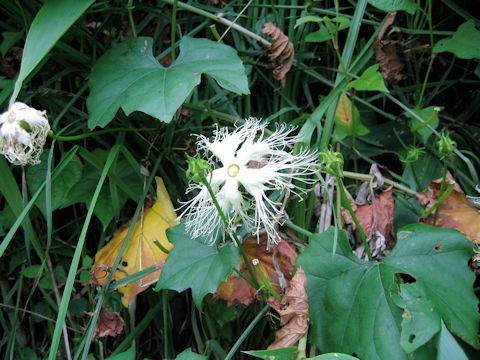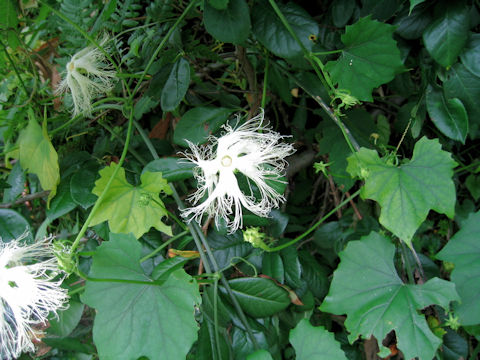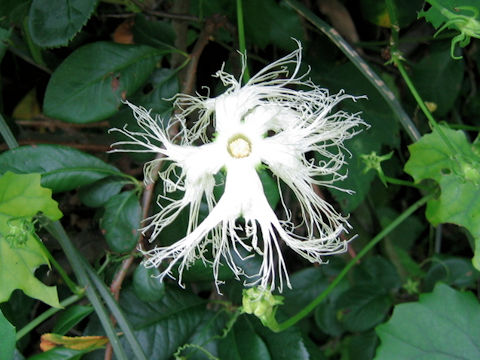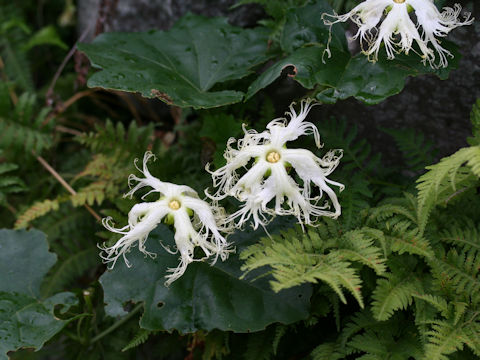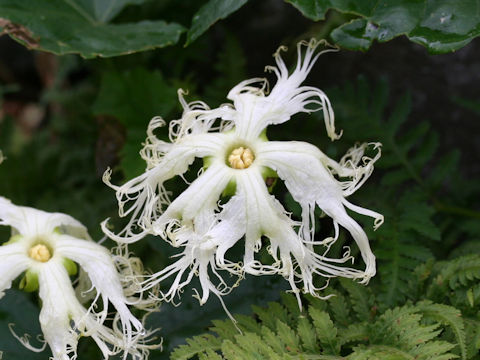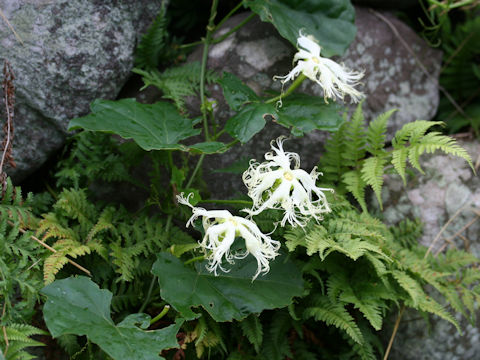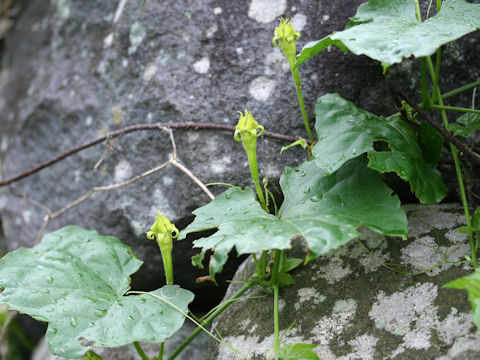
|
The "Ki-karasu-uri" (Trichosanthes kirilowii var. japonica) belongs to Cucurbitaceae (the Gourd family). It is a perennial herb that is distributed throughout Japan. It grows in bushes and wastelands, and its stems are vine-like and entwined with tendrils. The leaves are broadly centered and shallowly lobed with 3 to 7 lobes. The surface of the leaves is shiny, making it easy to distinguish it from the "karasu-uri", which has numerous short hairs on its leaf surface. The male plant produces racemes from the leaf axils from July to September, and the female plant produces single white flowers. The corolla is five lobed, and the lobes have narrow lace-like lobes at the tips. The fruit is an elliptic capsule that ripens to yellow. The roots and seeds are used for medicinal purposes, and the starch from the roots is called "tenkafun", which is used for sweat rash.
|

